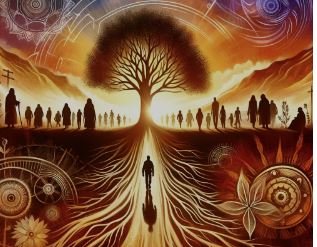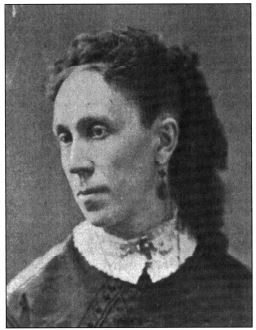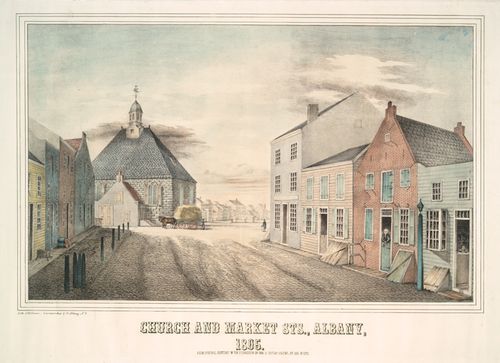Happy New Year! I’ve been busy in the two weeks I took off for the holidays – I wrote my memoir.
Go ahead and laugh. You, too, can easily record your memories and take this off your To-Do list. A little background info first . . .
For years, every time a funny situation or a strange happening occurred I’d say, “I’m going to put that in my book someday.” I never quantified when “someday” would be. The week of December 6th I got three notices from the universe that it was time for me to get cracking on my life story.
The first happened on St. Nicholas Day which according to my family, he was Croatian. I know he wasn’t but my family culture was such that everyone who was revered was somehow Croatian. Investigating my family stories cleared up quite a few of the tales but we always celebrated his feast day by leaving out our shoes and magically, overnight, they would be filled with treats (think an apple, candy, or cookies). We’d have a pork roast for dinner which I never figured out how that was connected to St. Nick but it was delicious.
This past St. Nick Day I gave a lecture at my local library on interviewing family members. One attendee asked me what to do if he happened to be the oldest family member. I suggested he interview himself. On Thursday of that week, I was volunteering at my city’s historical society when a visitor asked me how long I had lived in the area. I replied, “Nearly 50 years.” and he said, “You’re an old-timer then.” I guess I am but I hadn’t considered the title. The following day I was doing research at a nearby town for an upcoming journal article I’m writing and I overheard the docent give some incorrect information about the surrounding area. I had lived there for almost 10 years so I experienced firsthand what she was discounting. I put in my two cents and she replied, “I guess you should be giving the tours since you’re an old-timer.” Wow, that’s twice in 24 hours. Thanks, Universe, for the reminder.
I went home and seriously considered the need to interview myself. I do have memories that are of historical value and I’d like to recall them now while I still can. Alzheimer’s runs in my family and as we’ve all learned the past two years, life is unpredictable.
The problem has always been I wasn’t sure how to start. I decided to try by speaking to my computer. I opened Microsoft Word and on the ribbon, clicked “Dictate,” then started speaking. The program types whatever you say. If you have issues typing effectively and efficiently this is a cheap way to get your thoughts down on paper. Notice I said “cheap.” Yes, there are programs you can purchase but I wanted something instantly I didn’t have to pay for.
I talked for a few minutes and then looked at what was recorded. It wasn’t bad, considering some of the information I was saying was not in English. Was it correct? No, but it was close. The bigger issue was that Word does not add punctuation. If you say “period” after your sentence it will type out the word “period.” Same with commas. Sigh.
It took me longer to go back and edit what I had just said than it would have if I had typed it in the first place. Even so, I would not have been able to start this project had I not spoken first. Staring at a blank Word document or a piece of paper was not going to move me forward. I am extremely verbal so I had to speak about what I wanted to record to begin the project.
Once I began I had no writer’s block. The memories just flowed, however, they didn’t flow in chronological order. That’s okay, too. My goal was to just let my brain download my life while I typed.
I didn’t care about spelling or grammar. If I forgot someone’s name I’d just leave a few spaces or hit the tab key and keep writing. Funny but the name would later resurface and I could go back and insert it in the space.
I didn’t write every day but I nearly did. I spent about 8 hours writing on the weekend and only 1-3 hours during the weekdays. I also decided to skip the years my children were small because I had created scrapbooks for them that recorded the good, bad, and ugly of those times. I refer to that in my book.
I have the free version of Grammarly and that helps tremendously with the spelling and punctuation. It underlines using a faint red line to highlight what needs possible correction. You just click on the underlined word and options are given to you.
Word of caution – the recalling of all of these memories does result in some odd dreams so be aware of that occurring. Nothing sinister, mind you, just a mix of your life events. For example, I dreamed about my deceased mother and a maternal aunt, along with a living cousin who was holding a beautiful baby. My aunt told me she had something important to tell me. I then woke up. I had written about the cousin’s first child the day before. Just want to warn you that your dreams may become extremely vivid while you’re writing.
Here’s what my plan now is . . . I’m going through my old photos and inserting them where appropriate in my story. Seeing the photos evoked a few more memories that I hadn’t recalled so I added a couple of paragraphs here and there. I was amazed that for the most part, my recall was fairly in chronological order. The most out-of-order time was in my college years. I don’t know why that was the case and I’d be interested to hear if you have the same result. I had completely forgotten about one of my husband’s first jobs and which summer we had gone on our first vacation. Was it between freshman and sophomore year or sophomore/junior?
Here’s another item to put on my to-do list; I discovered my photos are not in the order I want them to be so I’m creating albums. I use Google Photos and Dropbox to store them as I’m paranoid about losing the originals to a disaster. I’ve scanned them all but they were saved by when I scanned them and not by the person so I’ve got to work on that someday (when the universe tells me to haha.)
I’m almost done adding the photos and will then pull out my genealogical file on myself and look at documents. I have two from the hospital where I was born and they both have a different time of my birth. Lovely, right? My mom came up with the third time so I will never know for sure what time I arrived into the world. I’ll include both documents that wouldn’t be readily available to a descendant.
I then plan to have the story saved to a hardcover book, probably through Amazon but I’ve gotten that far to make a final determination. I’ll keep you updated when I get there and please let me know what you’ve done, Dear Reader, as I’d appreciate the input.
Here’s to Your Story in 2022!







